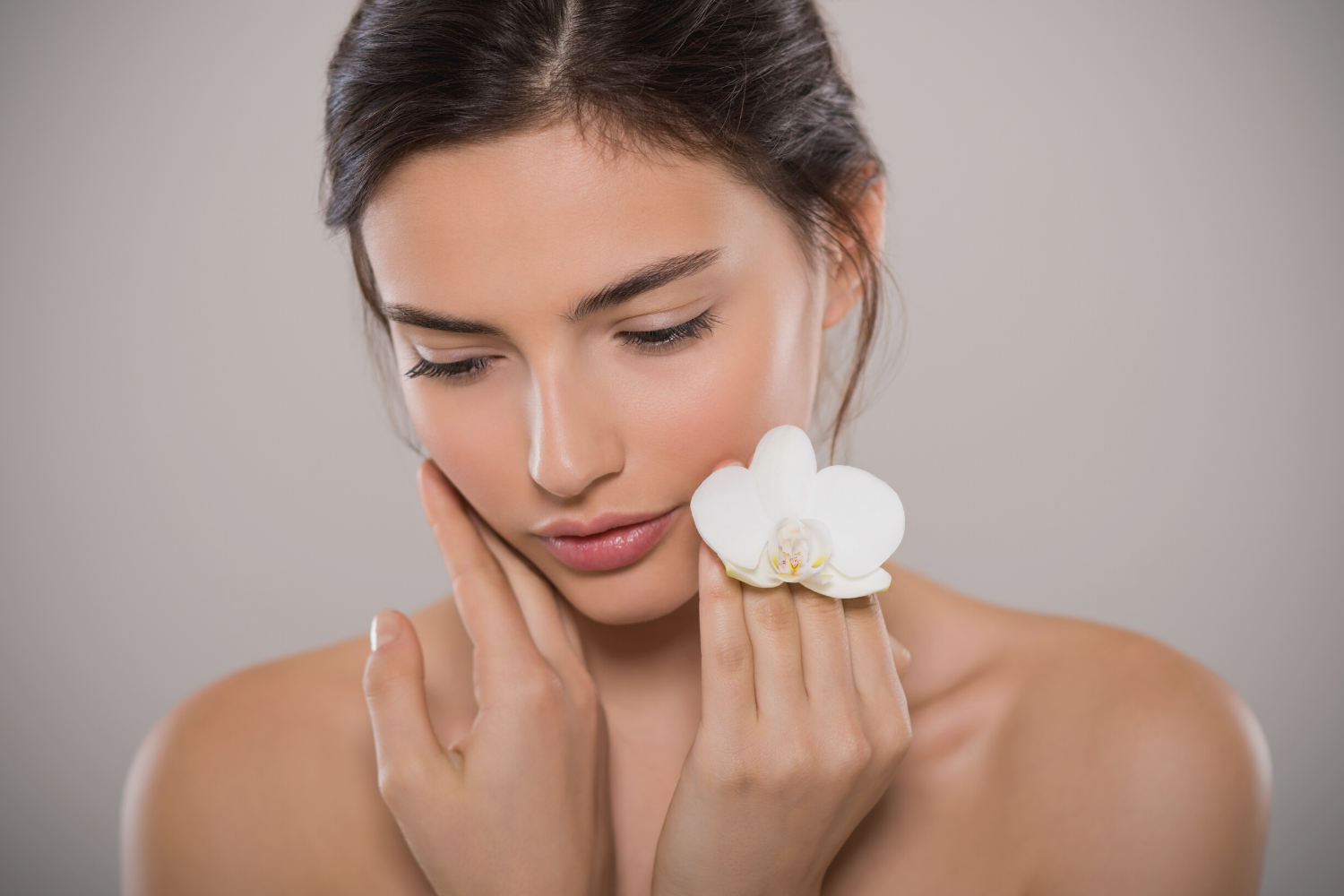In a previous blog post, we discussed the different types of Hydroxy Acids and how they differ in skin care. Read that post first to get an introduction to the skin care wonders of Hydroxy Acids. In this post, we will be diving into Alpha-hydroxy acids and determining who would benefit most from its use. So, what are Alpha-hydroxy acids? AHA’s are plant and animal-derived acids that are formulated in a great deal of skin care products. The previous blog post on hydroxy acids discussed the three main AHAs; glycolic acid, lactic acid and mandelic acid. However, there are seven types including; citric acid (derived from citrus fruit), hydroxycaproic acid (derived from royal jelly), hydroxycaprylic acid (derived from animals) and tartaric acid (derived from grapes). Out of all the AHAs, studies show glycolic acid and lactic acid to be the most beneficial on the skin. The following include all the benefits AHAs provide your skin with.
- Reduce fine lines and wrinkles. AHAs provide anti-aging benefits through improving the skins overall texture. A 2015 study looked into 52 volunteers between the ages of 30 and 55 that used a topical product containing AHAs. After 21 days, the study showed noticeable improvement in the skin’s texture, causing fine lines and wrinkles to be less noticeable. The gentle exfoliant abilities of AHAs can work to combat surface lines on the skin.
- Combat breakouts and imperfections. Breakouts are caused from deep within your pores when they are clogged with dead skin cells, oil and bacteria. AHAs work to remedy this by deeply exfoliating and clarifying your pores from impurities. Continued use of AHA products may also help prevent future breakouts through reducing the size of enlarged pores. AHAs may also work to eliminate acne scarring and discoloration. The reason they are so great to use on breakout-prone skin is because AHAs are gentle and work to also soothe irritated skin. A study in 2010 looked at 248 patients with mild to moderate acne and showed effective results in eliminating these imperfections with consistent use of AHAs.
- They exfoliate! Exfoliating at least once or twice weekly is an extremely vital step in achieving clear, vibrant skin. The number one benefit of AHAs are their deeply exfoliating abilities. They work to shed dead skin off of the surface layer and promote new skin cell generation to reveal a softer complexion. When you get older, you may notice more dead skin cell build up, this is because your skin cell cycle slows down. Because of this, it is very important to use a good exfoliant to combat dry, dull skin caused by build-up.
- Combats skin discoloration. As you age, you may experience more dark spots on your skin whether they are caused by UV damage or other environmental stressors. AHAs can work to help combat dark spots and imperfections on the skin through promoting new skin cell turnover. A 2013 study has shown glycolic acid can decrease the appearance of freckles by effectively penetrating the skin. Along with UV damage, AHAs can also work to decrease and combat hyperpigmentation and melasma. A 2012 study found a link between the use of lactic acid and a decrease in melasma.
- They help increase product absorption. To effectively get the benefits of your skin care products like moisturizers and serums, it is important to have a smooth surface. If you are not using a product that exfoliates, like an AHA, then your products will just sit on the surface layer of your dead skin cells. AHAs like glycolic acid can help break the surface layer of dead skin cells and allow your moisturizers and serums to deeply penetrate your skin for proper hydration.
How to use AHAs and know if they are right for you. If you have sensitive skin, you may benefit best from AHAs like lactic acid and mandelic acid as glycolic acid may be a little too strong for sensitive skin types. These two AHAs are gentler on the skin and do not exfoliate as deeply as other AHAs, providing a soothing effect on otherwise easily irritated skin. With that being said, the best way to get the benefits of AHAs would be through cleansers and serums that can work to effectively penetrate your skin’s surface layers. Fyab Health has a variety of nourishing skin care products that are formulated with AHAs like the Foaming Facial Cleanser with glycolic acid, the Blemish Control Serum with mandelic acid and the Anti-Aging Serum and Renewal serum with citric acid. When you are using AHAs it is important to note that the FDA recommends using an overall AHA concentration of less than 10 percent to avoid any unnecessary side effects.
Sources:
Sarkar, R., Bansal, S., & Garg, V. K. (2012). Chemical peels for melasma in dark-skinned patients. Journal of cutaneous and aesthetic surgery, 5(4), 247–253. https://doi.org/10.4103/0974-2077.104912 —READ HERE
Sharad J. (2013). Glycolic acid peel therapy – a current review. Clinical, cosmetic and investigational dermatology, 6, 281–288. https://doi.org/10.2147/CCID.S34029 —READ HERE
Baldo, A., Bezzola, P., Curatolo, S., Florio, T., Lo Guzzo, G., Lo Presti, M., Sala, G. P., Serra, F., Tonin, E., Pellicano, M., & Pimpinelli, N. (2010). Efficacy of an alpha-hydroxy acid (AHA)-based cream, even in monotherapy, in patients with mild-moderate acne. Giornale italiano di dermatologia e venereologia : organo ufficiale, Societa italiana di dermatologia e sifilografia, 145(3), 319–322. –-READ HERE
Tran, D., Townley, J. P., Barnes, T. M., & Greive, K. A. (2014). An antiaging skin care system containing alpha hydroxy acids and vitamins improves the biomechanical parameters of facial skin. Clinical, cosmetic and investigational dermatology, 8, 9–17. https://doi.org/10.2147/CCID.S75439 —READ HERE
Smith W. P. (1996). Comparative effectiveness of alpha-hydroxy acids on skin properties. International journal of cosmetic science, 18(2), 75–83. https://doi.org/10.1111/j.1467-2494.1996.tb00137.x —READ HERE← Previous


One response
very informative